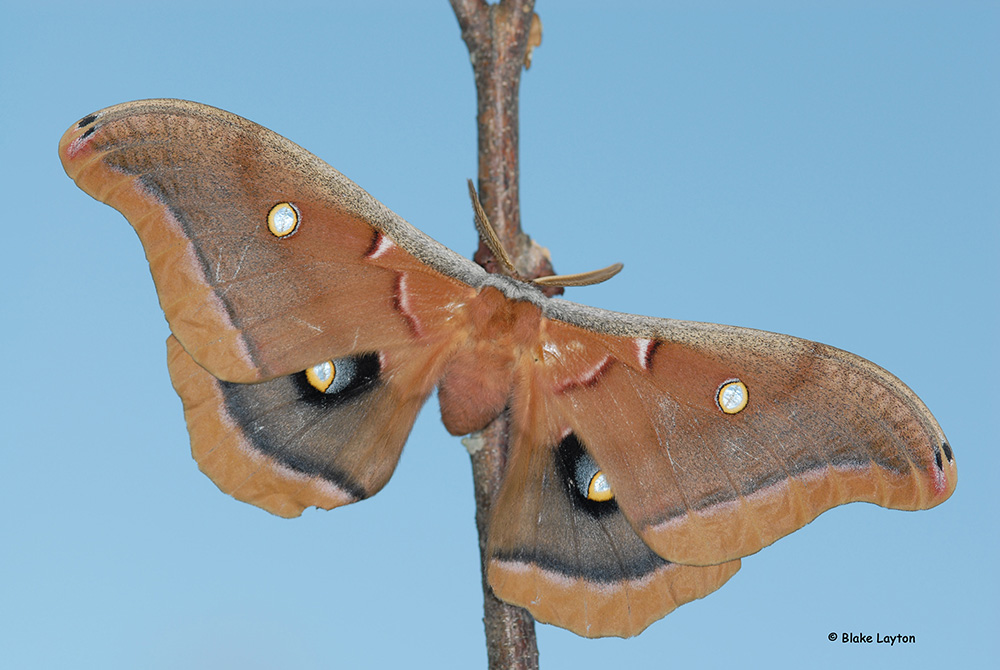Polyphemus Moth | Vol. 3, No. 1
Related News
June 23, 1997
May 12, 1997
March 17, 1997

Order: Lepidoptera
Family: Saturniidae
Polyphemus moths belong to a group of moths known as giant silk moth because of their large silk cocoons. With a wingspan approaching six inches, this is one of our largest moths. Like most moths, Polyphemus moths fly at night and spend their day resting among plant foliage. If you discover a moth at rest, it will likely have its hindwings hidden beneath the forewings, but if you disturb it, the moth may move its forewings forward to expose those two big eyespots. Imagine the startling effect this would have on a foraging blue jay. It may well think it had encountered an owl. Male and female moths both have “feathery” antennae, but the antennae of the males are considerably larger, and they use these larger antennae to detect the scent plume of a female that is looking for a mate. Caterpillars feed on the leaves of oaks, willows, and other hardwood trees. Despite the large size of mature caterpillars, they are well camouflaged and rarely seen. The large, beige cocoons are easier to spot during the winter months, after trees have lost most of their leaves. They will usually be hanging by a short piece of silk from a pencil-sized twig near the end of a limb, often having one or two dried leaves attached to the outside. Some cocoons also occur among leaf litter on the ground. These moths complete two or three generations per year in our area.
Although they sometimes feed on the leaves of fruit trees, Polyphemus moths are not considered to be pests.
See Disease and Insect Control for Homegrown Peaches and Plums for more information. Commercial producers should refer to the Southeastern Peach, Nectarine, and Plum Pest Management and Culture guide: http://www.ent.uga.edu/peach/peachguide.pdf.
Blake Layton, Extension Entomology Specialist, Mississippi State University Extension Service. The information given here is for educational purposes only. Always read and follow current label directions. Specific commercial products are mentioned as examples only and reference to specific products or trade names is made with the understanding that no discrimination is intended to other products that may also be suitable and appropriately labeled.
Sign up to receive Bug's Eye View.